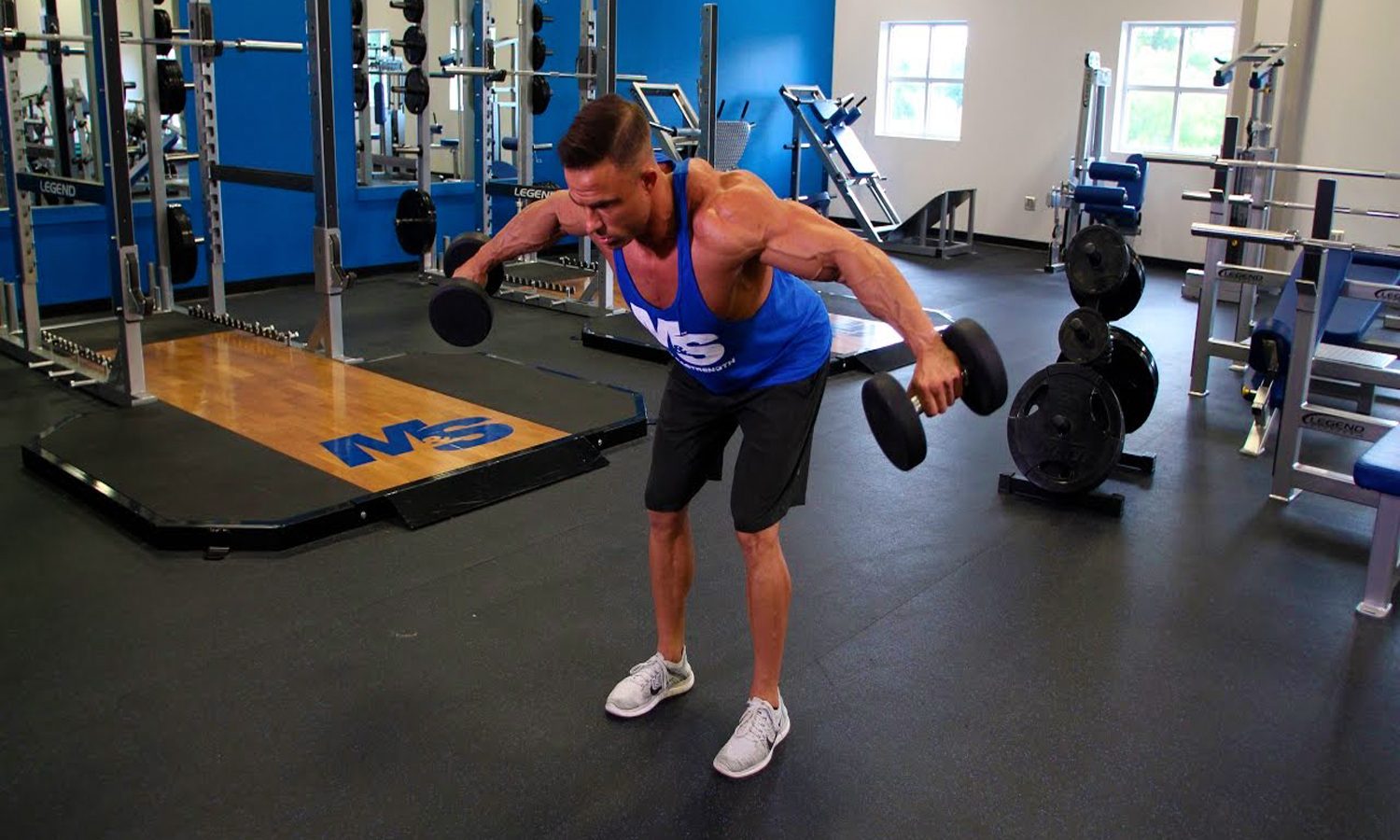
The rear delt fly is among the best shoulder exercises to consider adding to your routine. With so much focus on bulging biceps and washboard abs, it’s also important to target the shoulders and upper back. Here’s how to perform the rear delt fly, as well as the benefits, muscles worked, and top tips.
What is the rear delt fly?

The dumbbell rear delt fly is a compound weight training exercise that might also be called the rear delt raise, or the bent-over reverse fly. You can perform the rear delt fly with a cable machine, dumbbells, or a pec dec machine. This simple movement involves grabbing two dumbbells, standing up in a bent-forward position, and raising the weights out to your sides in an arcing motion.
What muscles does the rear delt fly work?

As the name suggests, the rear delt fly is a go-to exercise for targeting your rear deltoid muscles. Your rear deltoids refer to muscles located on the back of your shoulders that help with horizontal abduction or moving your arms away from your midline. This exercise allows you to isolate these often overlooked rear deltoid muscles.
The rear delt fly differs from the lateral raise because it specifically targets the deltoids and the posterior portion of your shoulder muscles. The lateral raise better targets the anterior portion.
The rear delt fly works your trapezius muscles around your neck and upper back and your rhomboid muscles between your shoulder blades. It also works out your infraspinatus and teres minor muscles of the rotator cuff. Since you’re standing up in a bent-forward position, you are also working your core, glutes, and quadricep muscles in your thighs.
What are the benefits of the rear delt fly?

The rear delt fly provides a range of benefits, from stronger shoulders and bigger muscles to better shoulder stability and improved posture. Here are some of the reasons to add this movement to your workout routine.
Better posture

Today, plenty of us are often hunched over our desks or lowering our heads and craning our necks to look down at our phones. The National Academy of Sports Medicine delves into the postural distortion that can happen over time from sitting and rounding your upper spine for too long.
Exercises like the rear delt fly help improve posture, correct muscle imbalances, and strengthen the upper back. This movement could also help diminish headaches caused or exacerbated by poor posture, weak muscles, and muscle imbalances.
Muscle growth and strength

The rear delt fly is an excellent choice for boosting strength and endurance and working several upper body muscles at the same time. The pay-off is larger and more defined upper back and shoulder muscles, especially your posterior deltoids, rhomboids, and middle trapezius. Strength and weight training exercises can increase your body’s levels of lean muscle mass and accelerate your metabolism, which is the rate that your body burns calories. A faster metabolism helps with weight loss.
Stronger bones

Weight lifting exercises like the rear delt fly place a good stress on your bones that can increase your bone density and bone strength. Weight training can also lower your risk of conditions like osteoporosis.
How to perform the rear delt fly

Here’s how to perform the rear delt fly:
- Stand upright and hold a dumbbell in each hand.
- Bend forward, hinging at your hips, so you’re leaning forward, but your torso isn’t completely parallel or horizontal with the floor.
- Extend your arms straight down so your palms are facing each other.
- Engage your core, squeeze your shoulder blades, and lift the weights up in a wide arc until your arms are in line with your back. (Think of this arcing motion like you’re an eagle spreading your wings).
- Pause for a moment before lowering the weights and bringing your arms back down to the starting position.
- Repeat for your desired number of repetitions.
Top tips for proper form

Here are some top tips for proper form:
- Keep your knees and your elbows slightly bent throughout the exercise.
- Keep your back neutral and engage your core.
- Try to shoot for performing three sets of 12 to 15 reps with proper form.
- Focus on control and form rather than speed and momentum.
- Start with lighter weights and work your way up as you perfect your form.
- You can also try other variations to find what works best for you. For example, try this exercise with your chest leaning on an incline bench to support your midsection.
If you have a shoulder impingement or shoulder pain or injury, you should avoid this exercise.
To get the most benefits out of the rear delt fly and reduce your risk of injury, you’ll need to perfect your form. The rear delt fly is one of the most effective for targeting the posterior shoulder muscles.



